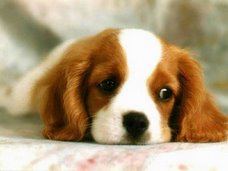Dogs in this group loves to chase fast-moving objects, which makes them the number one choice for a hunting companion. There are three groups of dogs that fall under the hound group – the scenthounds, the sighthounds, and the large-game hounds.Scent HoundsThe scent hounds are dogs that are bred to follow scent. They are trained to track down prey by using their excellent sense of smell. Their strong drive to follow a scent makes them hard to obedience-train because they can easily get distracted by any smell in their surroundings. They are affectionate to their family, great with children, and gets along well with strangers. T
hey are active, energetic dogs that need plenty of exercise.Examples of scent hounds are: Beagle, Dachshund, Harrier, Otterhound, American Foxhound, Basset Hound, Black and Tan Coonhound, English Foxhound, Bloodhound, and Petit Basset Griffon Venden.SighthoundsSighthounds use their eyesight to spot a prey before they go for the chase. The instinct to run after a prey or an object makes this breed difficult to obedience train. Early socialization, especially with small animals such as cats and birds, is mandatory in order to tame down this breed's prey instinct.
They need daily exercise and proper obedience training.Examples of sighthounds are: Saluki, Whippet, Afghan Hound, Borzoi, Greyhound, Pharaoh Hound, Ibizan Hound, Basenji, Irish Wolfhound, and Scottish Deerhound.Large Game HoundsLarge game hounds were bred to have stamina, strength, and endurance. Their superior sense of smell makes them an excellent hunting companion. Originally bred to hunt elk and other game, this breed tends to be aggressive toward small animal. Early training and socialization is required to modify this behavior. This breed makes a great watchdog.
They are initially suspicious of strangers and does not tolerate roughhousing. Children should be taught to be gentle with breed. Owner of large game hounds must have time to train and exercise this active breed.Examples of large game hounds are: Rhodesian Ridgeback and Norwegian Elkhound.





